Torben Ballin is an independent lithics specialist and is one of the specialist authors for the A75 Dunragit Bypass post-excavation works. Torben is this month’s guest contributor to the blog.
20,554 lithic artefacts were recovered from the excavations at Dunragit, mostly of flint but also including some Arran pitchstone. These objects were retrieved from a large number of mostly chronologically mixed sites, dominated by Mesolithic and Middle/Late Neolithic material, but a small number of sites were particularly interesting. They include a Mesolithic settlement at West Challoch and a Neolithic/Bronze Age burnt mound at Droughduil Bridge.
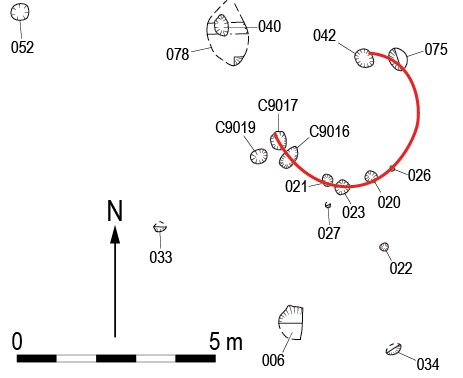
Although the 762-piece lithic assemblage from one of the clusters of features at West Challoch includes small amounts of intrusive later Neolithic finds, it generally forms a homogeneous Late Mesolithic assemblage dated to c. 6900-6800 cal BC. It was associated with a number of interesting features, such as a horseshoe-shaped structure, a cooking arrangement, and a number of large pits.
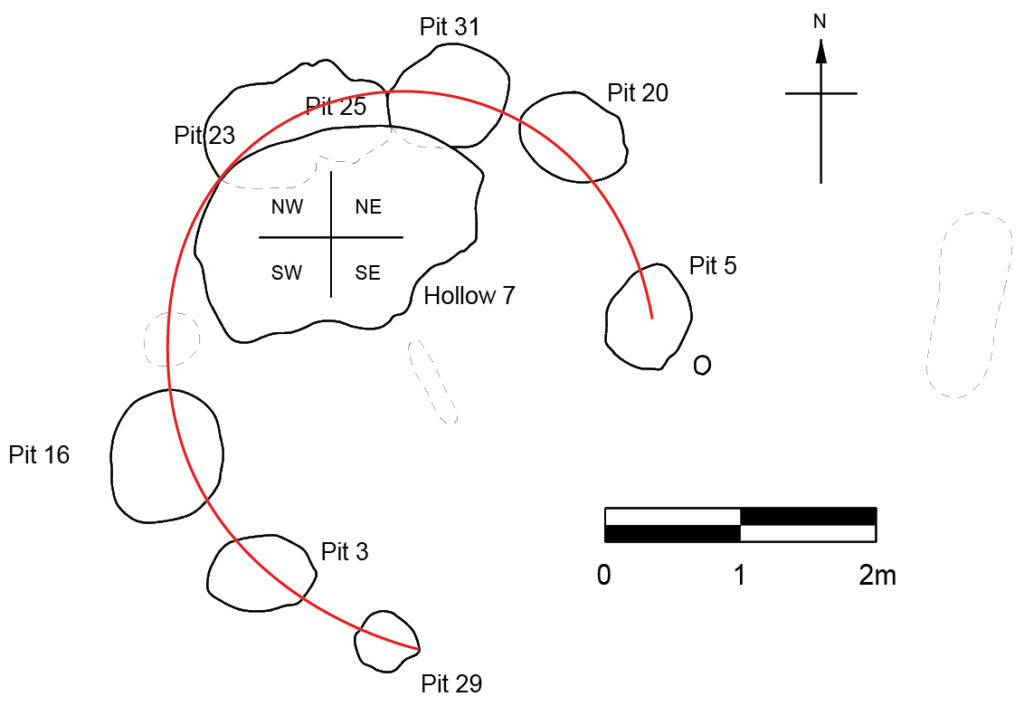
In structural terms, the shelter is related to similar horseshoe-shaped structures from eastern Scotland, such as those from Fife Ness and Standingstones in Aberdeenshire.
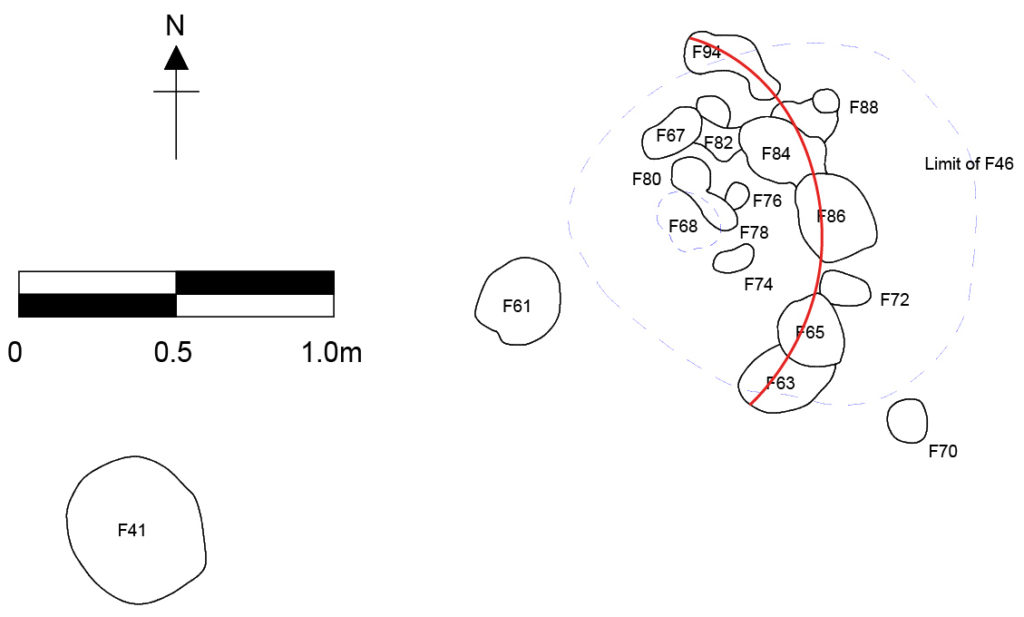
One radiocarbon-dated pit contained Arran pitchstone, one of only two Mesolithic Scottish radiocarbon-dated pits with pitchstone, where the large majority of pitchstone from pits has been dated to the Early Neolithic. Arran pitchstone is a type of volcanic glass similar to obsidian and in Scotland it is only found on the Isle of Arran in the Firth of Clyde. In Neolithic times it was traded as far north as Orkney and as far south as Dublin. The discovery at Dunragit of a Mesolithic pit with pitchstone has been interpreted as evidence of different forms of prehistoric exchange networks, where the Mesolithic was characterised by the exchange of individual pieces of pitchstone at a personal level, whereas the Early Neolithic exchange of pitchstone probably represents systematic exchange within a tribal system.

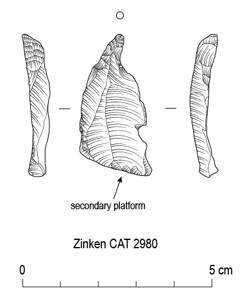
A total of 16,783 flints were recovered from another cluster of Mesolithic features at West Challoch, 580 of which are microliths and microburins. Microliths are tiny modified blades which in the Mesolithic were used as tips and edges of various forms of weaponry, and microburins are waste products from the production of microliths. These finds almost certainly date to the Late Mesolithic, and only one solitary, residual Hamburgian Zinken appears to be of another date. The Hamburgian artefact, as its name suggests, is a type known from sites in north-west Europe towards the end of last Ice Age around 14,000 years ago and Zinken are specialised blade-based piercers with a curved tip. Zinken only occur in Hamburgian contexts. Formally, this piece from Dunragit is similar to a slender Zinken retrieved in connection with the excavation of Howburn Farm in South Lanarkshire.
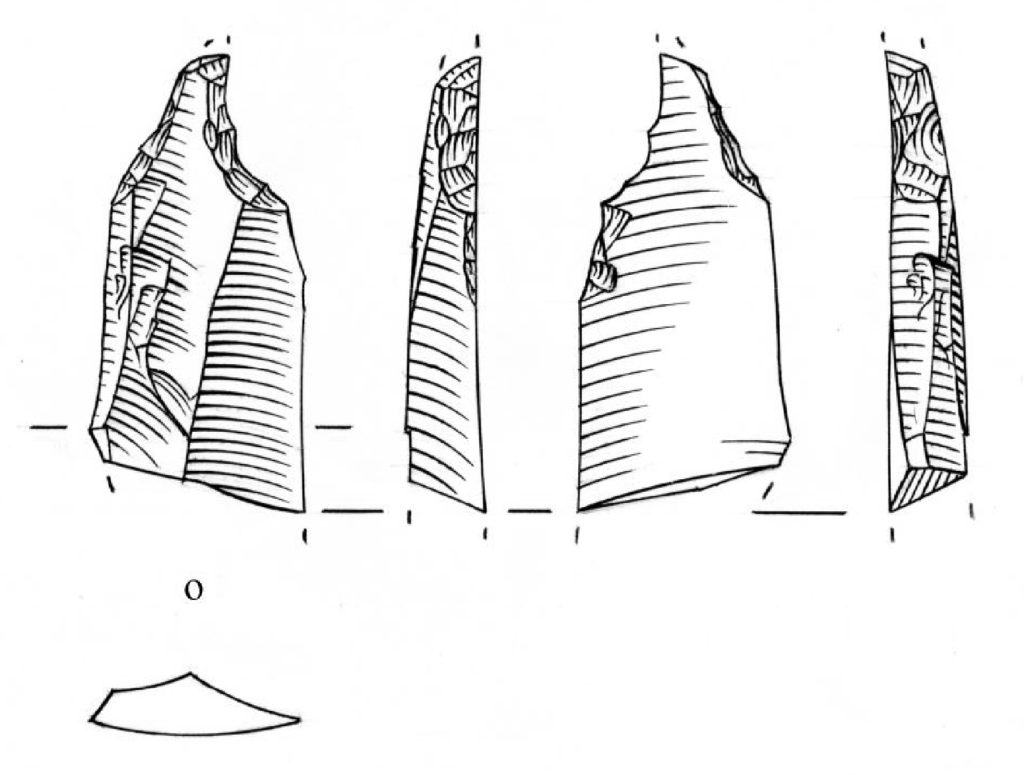
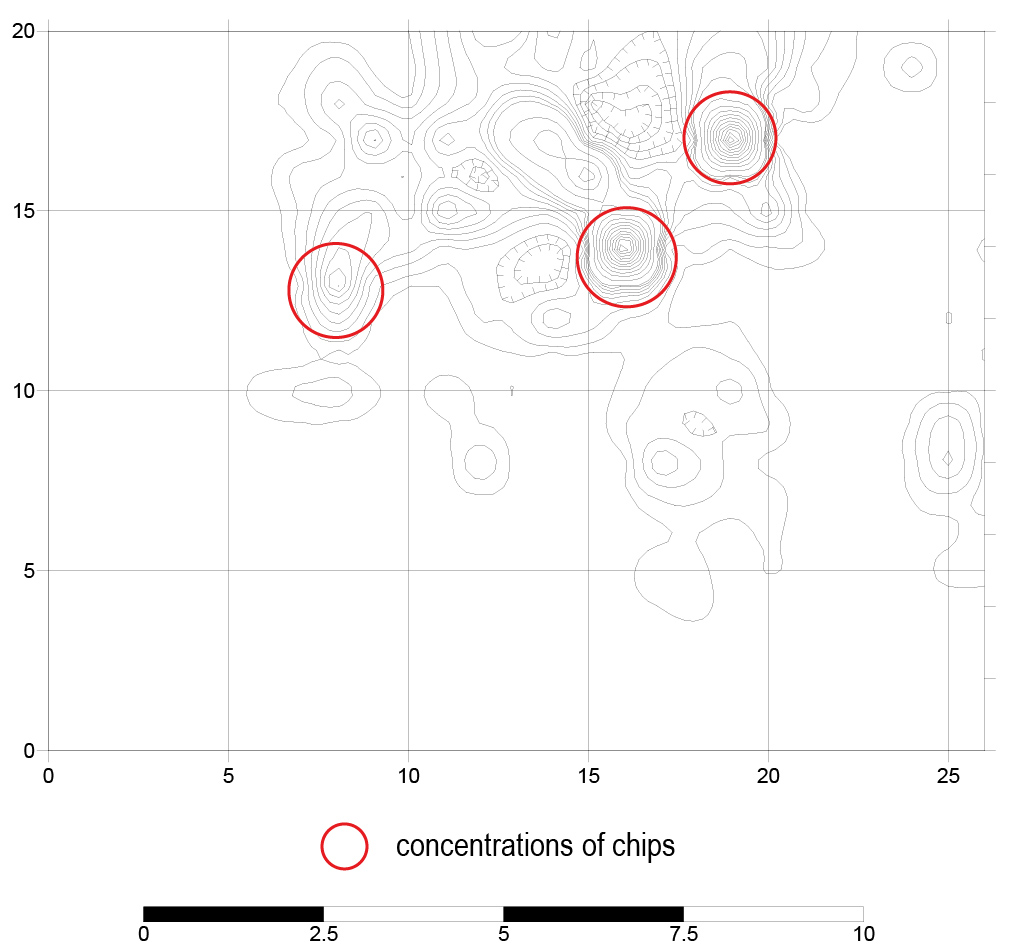
During the excavation, the finds appeared to form one large concentration, and the original working hypothesis was therefore that this might be the footprint of a hut of the same type as found on the coast of north-east England (at Howick) and south-east Scotland (at East Barns near Dunbar). However, distribution maps illustrating the distribution of individual finds categories (e.g., chips, burnt pieces, blades, microliths, etc) clearly showed that this was not the case, and that the finds probably represent 10-12 individual visits within a limited time-frame to a favoured spot in the landscape to knap flint, produce stone tools and process killed animals with the flint tools. The 200+ scalene triangles date the visits to sometime during the Late Mesolithic, that is 8400-4000 BC.
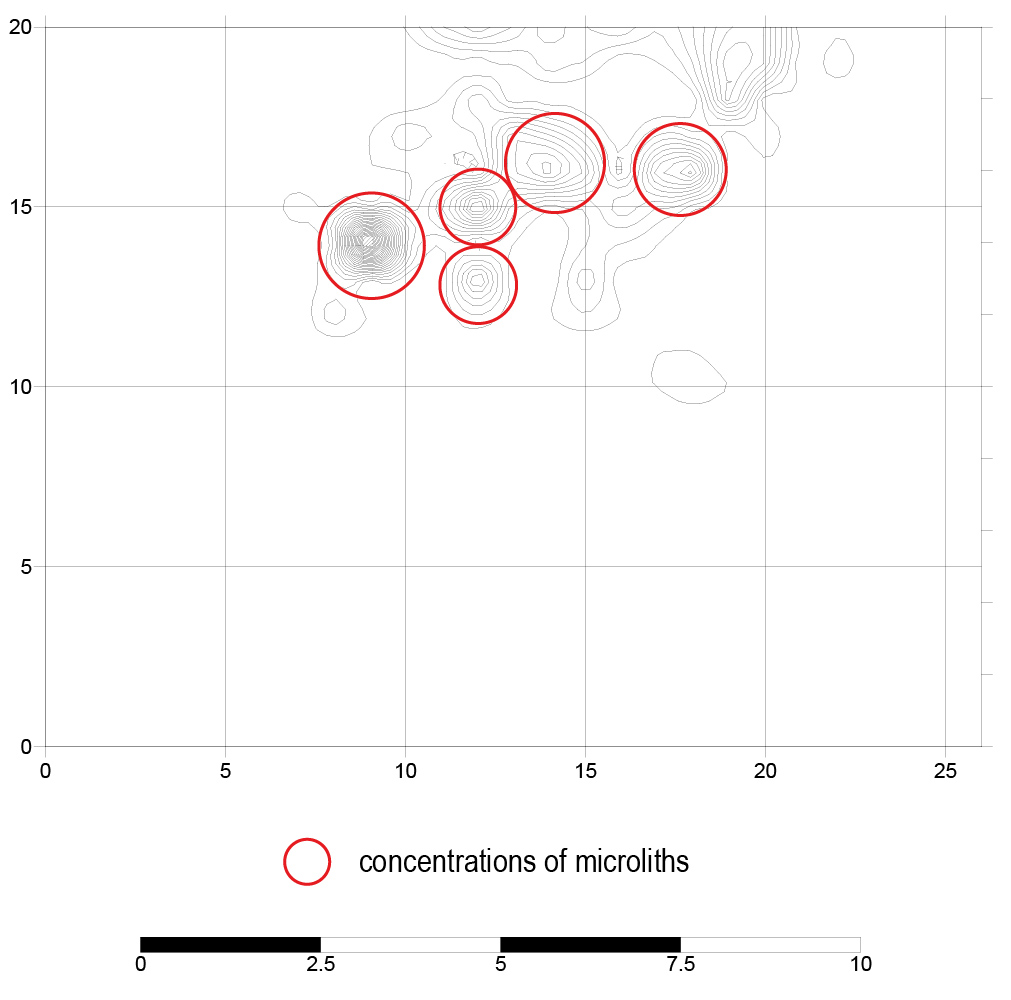
The excavation at Droughduil Bridge revealed a complex burnt mound with a trough that still had remnants of wood lining and a small sluice controlling water into the trough from a narrow cut channel. Burnt mounds are so-called because of the mound of burnt stone and charcoal that is typically found around a pit/or trough used to heat water with stones from a hearth. They are a very common form of monument and can be found across western Europe, Britain and Ireland from the Mesolithic through to the later Bronze Age, although they are typically associated with the Bronze Age period. Burnt stone and charcoal was recovered from the deposits within and around the trough. An assemblage of 569 flints was mixed into these various deposits, and the radiocarbon-dates are problematic with the basal fill of the trough giving a date of 353- 94 BC (Iron Age) and the channel leading into the trough giving a date of 974- 834 BC (Later Bronze Age). This is no doubt due to the water action on the feature, it being located in an estuarine environment. Whereas sediment can be eroded and redeposited, the lithic assemblage and its indicative date provide more certainty on the date of the activity at this burnt mound.
The assemblage is a homogeneous Middle Neolithic assemblage of the kind known from Wester Clerkhill and Wester Hatton in Aberdeenshire, including Levallois-like and bipolar cores and flakes, a chisel-shaped arrowhead, end-scrapers and scale-flaked knives.
If the assemblage is contemporary with the burnt mound, this defines the structure as one of the earliest of its kind and associated with substantially more worked flint than these structures usually are. If not, this is still a useful Middle Neolithic assemblage, adding to the knowledge of this period. Further dates are being sought, this time using the in situ wood pieces that remained of the wood lining, it is hoped this will provide a more accurate date for the feature than the sediment provided.
Overall, analysis of the lithics from Dunragit, and comparison of these finds with contemporary finds in eastern and western Scotland allowed a number of questions to be discussed, and it was for example possible to define a number of regional differences between the Mesolithic of eastern/southern Scotland on one side and western Scotland on the other. In eastern/southern Scotland, bipolar technique appears to have been used sparingly during the Mesolithic and Early Neolithic periods, and this approach only became a systematically applied reduction technique from the Middle Neolithic onwards, to become particularly common during the Bronze Age. In western Scotland, on the other hand, bipolar technique was used systematically throughout prehistory. It is suggested, that this difference reflects differences in lithic raw material availability, with flint being less plentiful in the west and with flint nodules being considerably smaller in the west.
| Site | Region | Microliths, number | Microburins, number | Microlith:micro-burin ratio |
| 1) Glenbatrick Waterhole | West | 428 | 99 | 81:19 |
| 2) Lussa River | West | 254 | 70 | 78:22 |
| 3) Lealt Bay | West | 1,283 | 250 | 84:16 |
| 4) Nethermills Farm | East | 431 | 620 | 41:59 |
| 5) Standingstones | East | 61 | 59 | 51:49 |
| 6) Dunragit Site 19 | South | 358 | 206 | 63:37 |
The Table shows the microlith:microburin ratios of three sites from the west, two from the east and one from the south.
Another interesting difference is the use of microburin technique from the production of microliths during the Mesolithic, where this approach was used sparingly in the west and systematically in the east and south (see table above). It is suggested that this scenario is based on the following causal chain: Raw material (smaller pebbles in the west) Þ reduction technique (more use of bipolar technique in the west, resulting in thicker, more irregular microblade blanks) Þ microlith technology (less common use of microburin technique in the west). A comprehensive lithics report will form part of the forthcoming Monograph.
